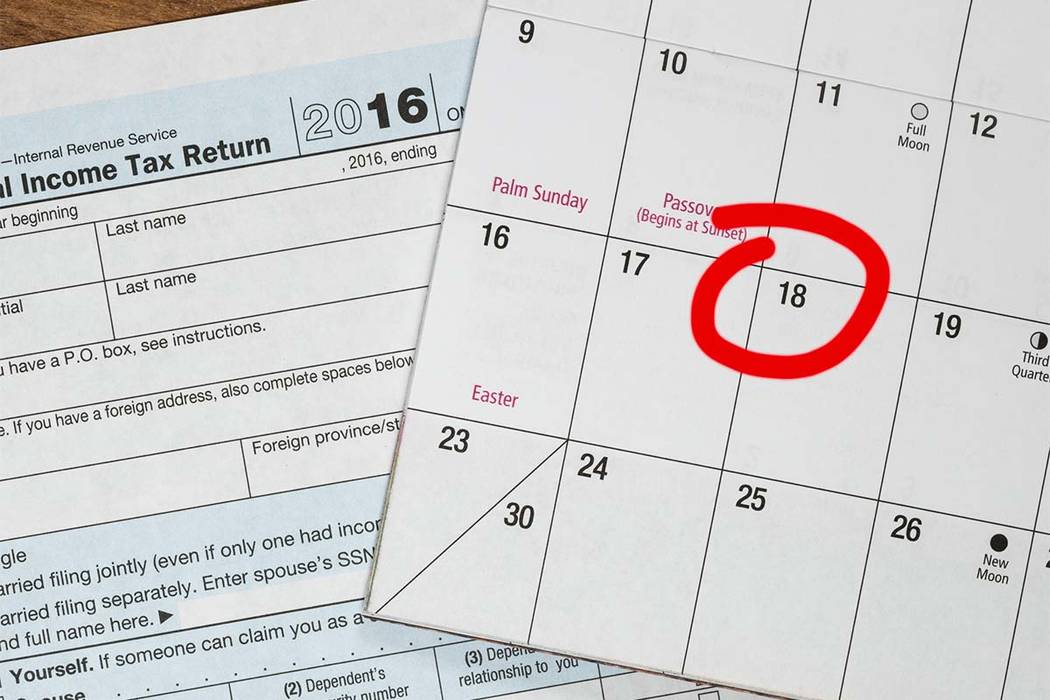Here’s how to correctly file an IRS tax extension
If you can’t file your taxes by April 18, don’t panic. The Internal Revenue Service regularly grants extensions to people who need a more time. Even though taxpayers commonly need a deadline extension, the process and documents needed for requesting an extension can be confusing. Here’s how to get a tax extension and correctly submit your IRS tax extension request if you’re filing your taxes at the last minute.
When you seek a tax extension deadline, 2017 rules require you to first take a few preliminary steps. The general process to request a tax deadline extension is the same whether you file taxes online or by mail. The tax extension deadline for 2016 returns is the same date as the regular tax deadline: To qualify for a federal tax extension, you must file the appropriate forms by the standard tax filing deadline of April 18, 2017.
How to file a tax extension
Get and fill out IRS extension Form 4868: Application for Automatic Extension of Time to File U.S. Individual Income Tax Return.
Mail your completed tax extension form for 2016 to the IRS or file the form electronically by using an IRS e-file form.
Once you’ve filed your completed 2016 tax extension form, you’ll automatically get the six-month extension to file your 2016 tax return, provided you meet the qualifying criteria.
It’s possible to get the automatic extension without filing IRS Form 4868. To do this, pay all or part of your estimated income taxes that are due. You must provide relevant tax information and indicate that the payment is for a tax-filing extension using one of the IRS-approved methods of payment. You’ll then receive a confirmation number for your records.
Filing for a state tax deadline extension
The last date for tax filing for your state is the same as the federal deadline: April 18. But if you need more time to file state taxes, too, note that getting a federal tax extension doesn’t mean that the deadline to submit your state taxes is also extended.
The process and requirements for filing for a state tax extension vary. Some states offer automatic six-month extensions to file your state income tax return. In California, for example, if you can’t file by April 18 but will have a refund or no balance due, your filing deadline will be automatically extended to October 17.
Tax extension guidelines vary by state, though, so you should contact your local state tax authority to get instructions and details. You might need to fill out a state-specific form as well as submit a payment by the April 18 deadline if you owe taxes.
Automatic tax extension: How to know if you qualify
Most taxpayers can qualify for the general automatic tax extension from the IRS if they can’t file their tax returns by the due date. The automatic income tax extension allows you six more months to submit your federal tax forms.
Six months is generally the longest amount of time allowed for an extension for filing taxes, though certain exemptions exist.
Special tax extensions
Some tax filers will qualify for an automatic two-month extension to file their federal tax return and pay income tax. To qualify, you must be a U.S. citizen or resident alien, and on April 18, 2017, you must:
Be living outside the U.S. and Puerto Rico, and your main place of business or post of duty must be outside the U.S. and Puerto Rico
Be in military or naval service on duty outside the U.S. and Puerto Rico
Who doesn’t qualify
Some taxpayers won’t qualify to file extensions of any kind. People who are under court order to pay by the regular due date won’t be granted more time to pay or file their taxes. Also, if you want the IRS to figure the taxes you owe or that will be refunded, you won’t qualify for the six-month extension.
Penalties for late filing
Filing a tax extension keeps you in good standing with the IRS, which will then know that you’ll be filing your complete paperwork later. But a tax extension doesn’t grant you more time to pay what taxes you owe beyond the tax due date. Consider the following penalties if you’re going to pay late:
The penalty for paying late is 0.5 percent for every month that the outstanding tax is not paid.
The maximum penalty for paying late is 25 percent of the total.
After 60 days, the minimum penalty is $205 or 100 percent of the balance due, whichever is smaller.
If you believe that you have reasonable cause for seeking a tax-filing extension, attach a form explaining your reasons to your federal tax extension form. Note that you might have to pay interest on unpaid taxes. Currently, this rate is 3 percent compounded daily.
The interest on your late taxes will accumulate as tax debt until you pay the IRS in full. So although seeking an extension past the due date might seem like a good idea, you should file for a tax extension only if absolutely necessary.
Whether you’re e-filing or submitting your returns the old-fashioned way, you’ll need to file for a tax extension by April 18 if you won’t be able to file on time. For most taxpayers, it’s fairly easy to get an extension, but you’ll have to follow instructions, submit the right documents and get your request in on time.
RELATED
What to do when you can't pay your tax bill
How to File State Taxes for Free


















